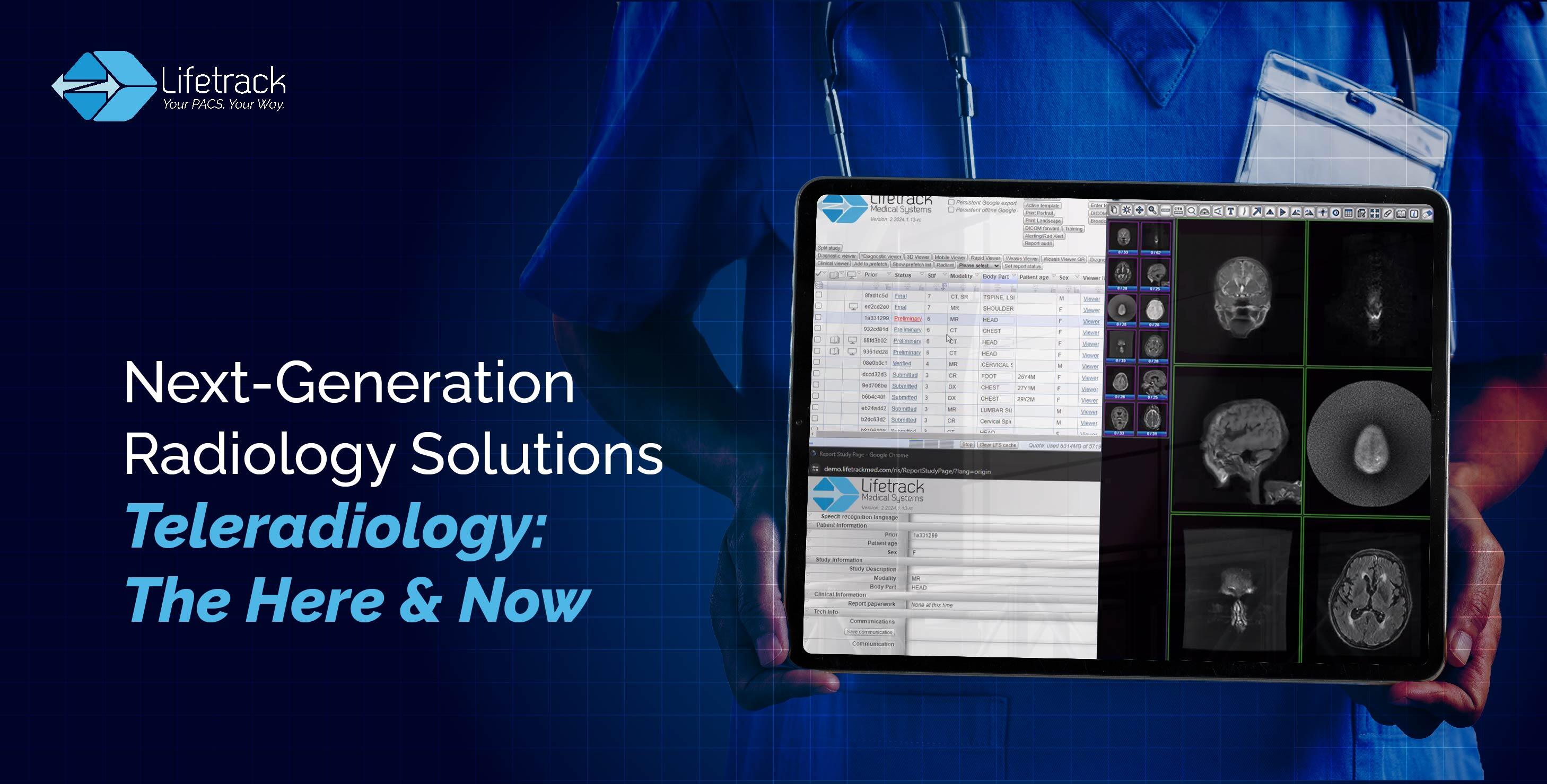
Teleradiology: The Here & Now
Modern healthcare has seen a remarkable advancement in radiology services, particularly in the form of teleradiology. Teleradiology plays a...
According to a survey we conducted during the PCR 2020 convention, 48% of local rads wished their RIS PACS performed better, were easier to use, and had more useful features.
![[PHOTO] 210119 48 percent of local rads2](https://www.lifetrackmed.com/hs-fs/hubfs/RRR%20Blog%20Media/%5BPHOTO%5D%20210119%2048%20percent%20of%20local%20rads2.png?width=698&name=%5BPHOTO%5D%20210119%2048%20percent%20of%20local%20rads2.png)
Having access to a reliable RIS PACS on-premise and even offsite is critical for radiology departments in medical institutions because an unreliable RIS PACS may lead to all sorts of issues, such as:
#1 Slows down reporting
Traveling from your house to work already takes up enough time but imagine getting to work, only to face a RIS PACS that always lags, is hard to navigate, and needs a lot of third-party applications for different features. This affects the amount of work you can get done, as well as the number of patients that you can serve. With reliable software, you can go straight to opening cases, reading, reporting, and finalizing studies in a seamless manner and you can get more cases done. It also leaves you room to do other things in life aside from work.
#2 Reports are not standardized and may be prone to error
There are cases where reporting is not integrated into the software. Rads either manually write them down and someone else types it up for them or they have to use a different program to type. Reports may also end up inconsistent as some info may get lost in translation. When the reporting tool is integrated into the PACS and if there are available templates, reports end up being done faster, more systematically, and accurately.
#3 Patients wait longer for their results
The reality is, more often than not, patients spend hours, even days, waiting for their results. It could mean more resources are spent by patients traveling to the clinic, some even missing a day of work. The faster they get their results, the sooner they can address their conditions.
If your RIS PACS is slow, clunky and prone to freezing or crashing, then chances are you always seem to have never-ending case backlogs. The bulk of your time is spent at work, waiting for your PACS to load cases. Ultimately, you serve fewer patients than you must, lowering your productivity.
![[PHOTO] 210119 48 percent of local rads3](https://www.lifetrackmed.com/hs-fs/hubfs/RRR%20Blog%20Media/%5BPHOTO%5D%20210119%2048%20percent%20of%20local%20rads3.png?width=720&name=%5BPHOTO%5D%20210119%2048%20percent%20of%20local%20rads3.png)
So what does a reliable RIS PACS look like?
These are just the generic details you have to note. What about you? Do you also wish your RIS PACS was more reliable?
Stay tuned for our next article as we go through how radiologists describe what a reliable RIS PACS looks like. Get a more detailed checklist of things you should look for to ensure that your software works best for you.
What are the other challenges you face with your RIS PACS?
About Lifetrack:
Lifetrack Medical Systems is a health-tech company focused on making medical imaging more affordable, accessible, and efficient. Lifetrack’s mission is to build simple, elegant, powerful, and intuitive software for the entire healthcare ecosystem.
LifeSys, our flagship RIS PACS solution, is a next-generation radiology solution that allows you to work using your workflow, when and where you need it while providing significant cost savings.
Interested in LifeSys for teleradiology? Learn more about the product here.

Teleradiology: The Here & Now
Modern healthcare has seen a remarkable advancement in radiology services, particularly in the form of teleradiology. Teleradiology plays a...
Understanding wRVUs: What They Are and How They're Used
RVU stands for Relative Value Unit, a system used in the USA to determine the value of a medical service in terms...